-
 Bitcoin
Bitcoin $115100
1.27% -
 Ethereum
Ethereum $3675
2.71% -
 XRP
XRP $2.995
1.45% -
 Tether USDt
Tether USDt $1.000
0.02% -
 BNB
BNB $769.8
2.64% -
 Solana
Solana $168.0
3.25% -
 USDC
USDC $0.9999
-0.01% -
 TRON
TRON $0.3371
1.48% -
 Dogecoin
Dogecoin $0.2051
3.36% -
 Cardano
Cardano $0.7394
2.30% -
 Hyperliquid
Hyperliquid $38.15
0.42% -
 Stellar
Stellar $0.3966
-0.36% -
 Sui
Sui $3.486
2.93% -
 Chainlink
Chainlink $16.72
2.52% -
 Bitcoin Cash
Bitcoin Cash $568.0
4.36% -
 Hedera
Hedera $0.2440
2.59% -
 Ethena USDe
Ethena USDe $1.001
0.04% -
 Avalanche
Avalanche $22.16
2.06% -
 Litecoin
Litecoin $119.1
-0.73% -
 UNUS SED LEO
UNUS SED LEO $8.991
0.04% -
 Toncoin
Toncoin $3.232
-0.39% -
 Shiba Inu
Shiba Inu $0.00001233
2.82% -
 Uniswap
Uniswap $9.717
2.53% -
 Polkadot
Polkadot $3.664
1.85% -
 Dai
Dai $1.000
0.01% -
 Monero
Monero $281.2
-3.89% -
 Bitget Token
Bitget Token $4.350
1.55% -
 Cronos
Cronos $0.1428
5.07% -
 Pepe
Pepe $0.00001050
3.68% -
 Aave
Aave $262.3
3.54%
BTC five-minute cycle gap filling trading strategy
The BTC five-minute cycle gap filling strategy involves identifying price gaps on Bitcoin charts and setting precise entry points to capitalize on short-term movements.
Jun 05, 2025 at 04:29 am
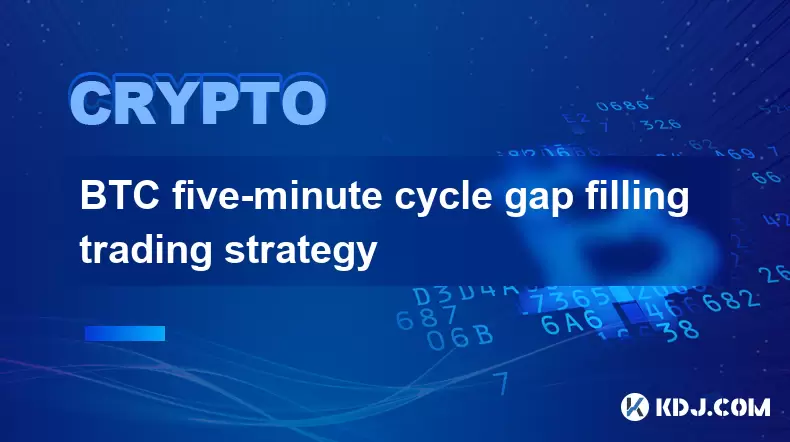
Introduction to BTC Five-Minute Cycle Gap Filling Trading Strategy
The BTC five-minute cycle gap filling trading strategy is a popular approach among cryptocurrency traders who aim to capitalize on short-term price movements. This strategy revolves around the concept of gap filling, where traders anticipate that price gaps created in one trading session will be filled in subsequent sessions. In the context of Bitcoin (BTC), the five-minute cycle refers to the intervals at which traders analyze and execute their trades. This article will delve into the mechanics of this strategy, its key components, and how to implement it effectively.
Understanding Gap Filling in Cryptocurrency Markets
Gap filling is a phenomenon observed in various financial markets, including the cryptocurrency space. It occurs when the price of an asset moves from one level to another without any trading activity in between, creating a 'gap' on the chart. In the case of Bitcoin, these gaps often arise due to significant news events or market sentiment shifts that occur outside of regular trading hours. The core principle of the gap filling strategy is that these gaps tend to be filled over time as the market seeks to correct itself.
To implement the gap filling strategy effectively, traders need to identify these gaps and predict when they are likely to be filled. This requires a keen understanding of market dynamics and the ability to analyze short-term price movements accurately.
Identifying Gaps in the Five-Minute BTC Cycle
To begin with the five-minute cycle gap filling trading strategy, the first step is to identify the gaps on the Bitcoin price chart. Traders typically use a five-minute candlestick chart to monitor price movements. Here's how to spot these gaps:
- Open your trading platform: Ensure you have access to a reliable trading platform that supports Bitcoin and allows you to view five-minute candlestick charts.
- Select the BTC/USD pair: Navigate to the Bitcoin against US Dollar (BTC/USD) trading pair.
- Switch to the five-minute timeframe: Adjust the chart to display five-minute intervals.
- Look for gaps: Gaps are visible as spaces between the closing price of one candlestick and the opening price of the next. These gaps can be upward or downward.
Once you have identified a gap, the next step is to determine whether it is likely to be filled and within what timeframe.
Predicting Gap Filling and Setting Entry Points
Predicting when a gap will be filled involves analyzing various technical indicators and market sentiment. Here are some key considerations:
- Volume analysis: High trading volume following a gap can indicate strong market interest and a higher likelihood of gap filling.
- Technical indicators: Use indicators such as the Relative Strength Index (RSI) and Moving Averages to gauge momentum and potential reversal points.
- Market sentiment: Monitor news and social media to understand the broader market sentiment that could influence price movements.
Once you have a sense of when the gap might be filled, you can set your entry points. For example, if you identify a downward gap and believe it will be filled, you might set an entry order just above the gap's lower boundary. Conversely, for an upward gap, you would set an entry order just below the gap's upper boundary.
Executing Trades Based on the Five-Minute Cycle Gap Filling Strategy
Executing trades using the five-minute cycle gap filling strategy requires precision and discipline. Here's a step-by-step guide on how to execute these trades:
- Monitor the five-minute chart: Continuously watch the BTC/USD five-minute chart for any new gaps or movements towards existing gaps.
- Set entry orders: Based on your analysis, set entry orders at the predetermined levels. For instance, if you expect an upward gap to be filled, set a buy order just below the gap's upper boundary.
- Set stop-loss orders: To manage risk, set stop-loss orders at a level that limits your potential losses if the trade goes against you. Typically, this would be just outside the gap.
- Set take-profit orders: Determine a take-profit level based on your analysis of where the gap is likely to be filled. This could be at the midpoint of the gap or at the opposite end of the gap.
- Monitor and adjust: Keep an eye on the trade and be prepared to adjust your stop-loss and take-profit orders based on market movements.
Risk Management in Gap Filling Trading
Effective risk management is crucial when employing the five-minute cycle gap filling trading strategy. Here are some key risk management practices:
- Position sizing: Only allocate a small percentage of your trading capital to each trade to minimize potential losses.
- Diversification: Avoid putting all your funds into a single trade. Diversify across different assets and strategies to spread risk.
- Use of stop-loss orders: Always set stop-loss orders to limit potential losses. Adjust these orders as the trade progresses to lock in profits or minimize losses.
- Emotional discipline: Stick to your trading plan and avoid making impulsive decisions based on emotions.
By implementing these risk management practices, traders can protect their capital and increase their chances of long-term success.
Analyzing Performance and Adjusting the Strategy
To improve the effectiveness of the five-minute cycle gap filling trading strategy, it's essential to analyze your performance and make necessary adjustments. Here are some steps to follow:
- Keep a trading journal: Record every trade, including entry and exit points, the rationale behind the trade, and the outcome.
- Review your trades: Periodically review your trading journal to identify patterns and areas for improvement.
- Backtest the strategy: Use historical data to backtest your strategy and see how it would have performed in different market conditions.
- Adjust based on findings: Based on your analysis, make adjustments to your entry and exit points, risk management practices, and overall strategy.
By continuously analyzing and adjusting your approach, you can refine the five-minute cycle gap filling trading strategy to better suit the current market environment.
Frequently Asked Questions
Q1: Can the five-minute cycle gap filling strategy be applied to other cryptocurrencies?
A1: Yes, the five-minute cycle gap filling strategy can be applied to other cryptocurrencies, but it's important to consider the liquidity and volatility of each asset. More liquid cryptocurrencies like Ethereum (ETH) and Litecoin (LTC) may offer more reliable gap filling opportunities compared to less liquid altcoins.
Q2: How does market volatility affect the effectiveness of the gap filling strategy?
A2: High market volatility can both increase and decrease the effectiveness of the gap filling strategy. On one hand, increased volatility can lead to larger gaps and more opportunities for trades. On the other hand, it can also result in more unpredictable price movements, making it harder to predict when gaps will be filled.
Q3: Are there any specific tools or software recommended for implementing this strategy?
A3: While there are no specific tools required, popular trading platforms like Binance, Coinbase Pro, and TradingView offer the necessary charting and order execution capabilities. Additionally, tools like TradingView's Pine Script can be used for backtesting and automating parts of the strategy.
Q4: How often should I monitor the five-minute chart when using this strategy?
A4: Monitoring the five-minute chart requires constant attention, especially during periods of high market volatility. Ideally, you should be able to check the chart every few minutes to catch new gaps and monitor existing trades. However, if continuous monitoring is not possible, setting alerts for specific price levels can help you stay updated without needing to watch the chart constantly.
Disclaimer:info@kdj.com
The information provided is not trading advice. kdj.com does not assume any responsibility for any investments made based on the information provided in this article. Cryptocurrencies are highly volatile and it is highly recommended that you invest with caution after thorough research!
If you believe that the content used on this website infringes your copyright, please contact us immediately (info@kdj.com) and we will delete it promptly.
- HashFlare Founders Face the Music: Jail Time Looms?
- 2025-08-07 14:30:12
- Pepeto's Pounce: Meme Coin Mania Meets Blockchain Infrastructure
- 2025-08-07 15:10:12
- Parataxis, SPAC Merger, and Bitcoin Treasury: A New York Minute on Crypto's Latest Moves
- 2025-08-07 15:30:12
- Toshi on Binance.US: A Memecoin's Big Break
- 2025-08-07 14:30:12
- Bitcoin, SPAC Mergers, and Parataxis: A New Yorker's Take on Crypto's Wall Street Moment
- 2025-08-07 14:50:27
- Bitcoin, Collateral, and Loan Strategies: A New York Minute on the Future of Finance
- 2025-08-07 14:50:27
Related knowledge

Can the Bitcoin protocol be changed?
Aug 07,2025 at 01:16pm
Understanding the Bitcoin ProtocolThe Bitcoin protocol is the foundational set of rules that govern how the Bitcoin network operates. It defines every...
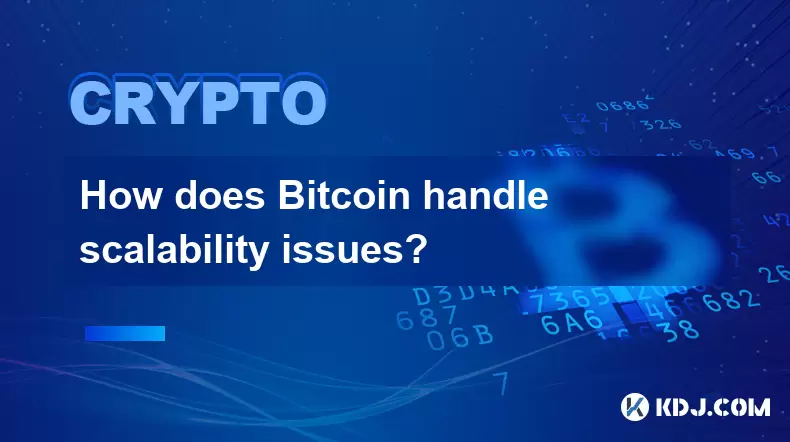
How does Bitcoin handle scalability issues?
Aug 07,2025 at 10:54am
Understanding Bitcoin’s Scalability ChallengeBitcoin’s design prioritizes decentralization, security, and immutability, but these principles come with...
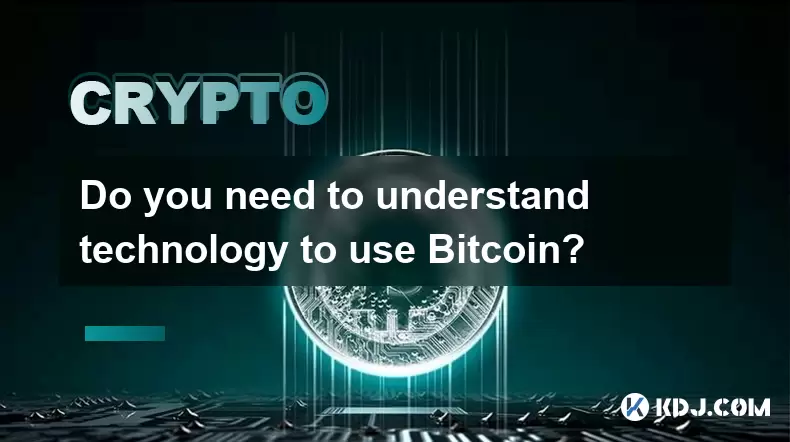
Do you need to understand technology to use Bitcoin?
Aug 07,2025 at 06:17am
Understanding the Basics of BitcoinTo engage with Bitcoin, one does not need a deep understanding of the underlying technology, much like how individu...
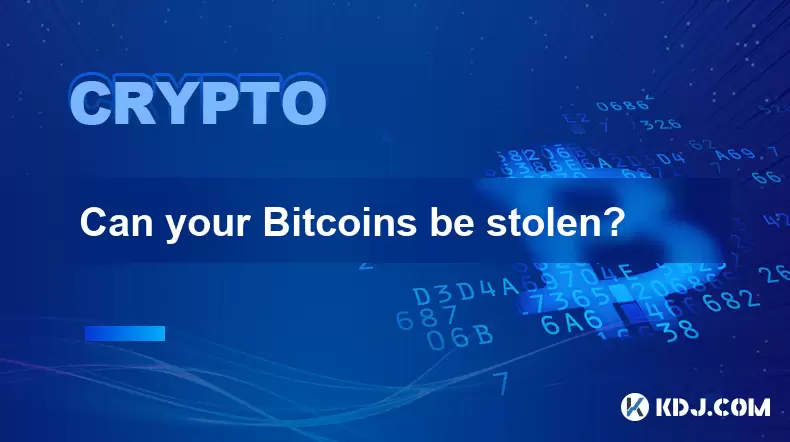
Can your Bitcoins be stolen?
Aug 07,2025 at 03:28am
Understanding the Security of Bitcoin OwnershipThe decentralized nature of Bitcoin means that no central authority controls the network, placing the r...
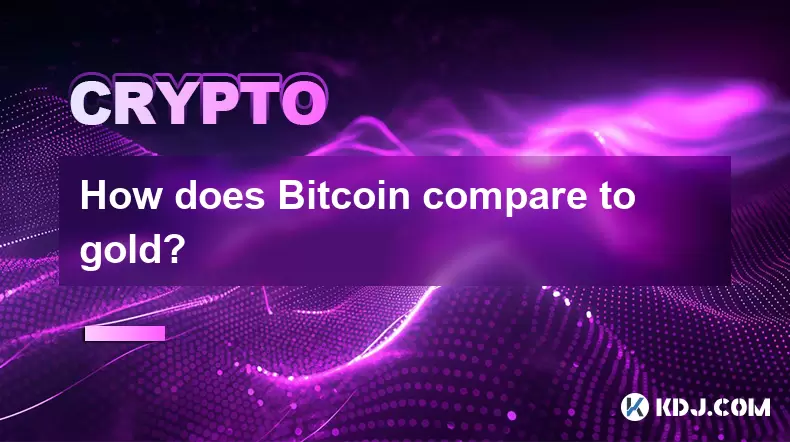
How does Bitcoin compare to gold?
Aug 07,2025 at 03:18am
Historical Context and Origins of Bitcoin and GoldUnderstanding the comparison between Bitcoin and gold begins with their origins and historical roles...

Can you lose money with Bitcoin?
Aug 07,2025 at 07:49am
Understanding the Volatility of BitcoinBitcoin is known for its extreme price volatility, which is one of the primary reasons investors can lose money...

Can the Bitcoin protocol be changed?
Aug 07,2025 at 01:16pm
Understanding the Bitcoin ProtocolThe Bitcoin protocol is the foundational set of rules that govern how the Bitcoin network operates. It defines every...

How does Bitcoin handle scalability issues?
Aug 07,2025 at 10:54am
Understanding Bitcoin’s Scalability ChallengeBitcoin’s design prioritizes decentralization, security, and immutability, but these principles come with...

Do you need to understand technology to use Bitcoin?
Aug 07,2025 at 06:17am
Understanding the Basics of BitcoinTo engage with Bitcoin, one does not need a deep understanding of the underlying technology, much like how individu...

Can your Bitcoins be stolen?
Aug 07,2025 at 03:28am
Understanding the Security of Bitcoin OwnershipThe decentralized nature of Bitcoin means that no central authority controls the network, placing the r...

How does Bitcoin compare to gold?
Aug 07,2025 at 03:18am
Historical Context and Origins of Bitcoin and GoldUnderstanding the comparison between Bitcoin and gold begins with their origins and historical roles...

Can you lose money with Bitcoin?
Aug 07,2025 at 07:49am
Understanding the Volatility of BitcoinBitcoin is known for its extreme price volatility, which is one of the primary reasons investors can lose money...
See all articles

























































































